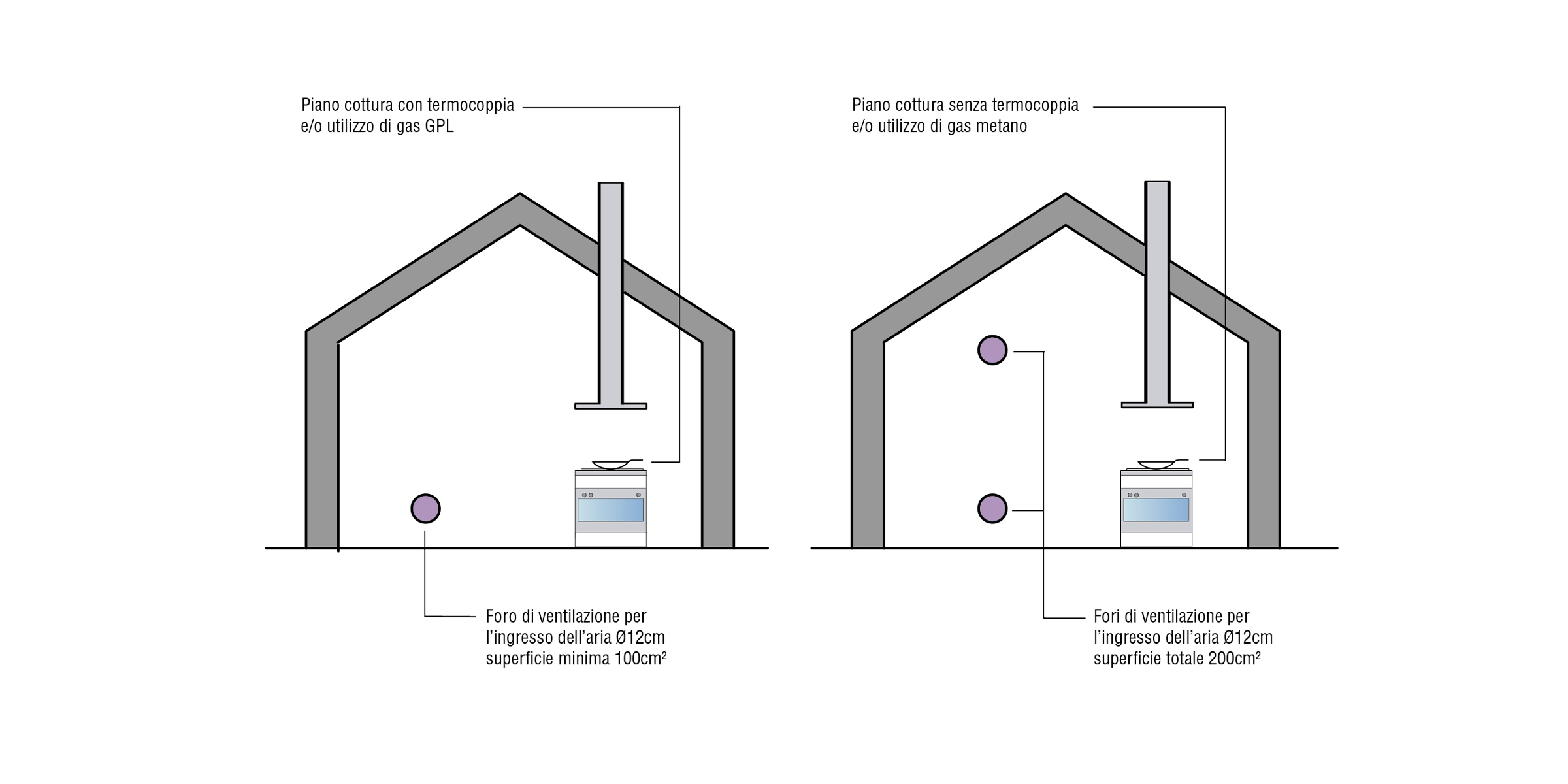Check Valve
Why do I need a check valve?
For all its hood models, Valcucine has adopted a special check valve that shuts when the motor is off, preventing unwanted air from flowing in from outdoors, and opens automatically when the motor is on. Unpleasant inconveniences may occur in absence of this valve.
Due to particular circumstances that may occur in the home (draughts or drops in pressure) if the fumes outlet hole is near other flues it may take in the toxic gasses coming from the fireplace, stove or boiler of adjacent homes.
Furthermore, if a check valve is not installed, cold air may come in from outdoors.
Furthermore, due to the chimney effect, a hood without a check valve tends to extract the hot air from the room and convey it oudoors even when it is off, thus incresing heating costs.
In a multi-storey building, all the fumes are usually conveyed into a common flue pipe and then discharged outdoors. The flue pipe must comply with the UNI EN 1443 standard construction requirements. It must also be heat-insulated to prevent condensation or cooling of fumes and it must run vertically and be without constrictions.

The hood flue pipes must run into a common flue pipe that is branched and used to this aim only.
A problem that must not be underestimated is the possible use of an extraction hood without a check valve. In this case, a flue pipe used in common with other homes may attract the fumes and food odours of neighbouring kitchens into your kitchen.
If your hood does not have an integrated check valve, we suggest you install a separate one-way valve in the outside wall.
For all its hood models, Valcucine has adopted a special check valve that shuts when the motor is off, preventing unwanted air from flowing in from outdoors, and opens automatically when the motor is on. Unpleasant inconveniences may occur in absence of this valve.
Due to particular circumstances that may occur in the home (draughts or drops in pressure) if the fumes outlet hole is near other flues it may take in the toxic gasses coming from the fireplace, stove or boiler of adjacent homes.
Furthermore, if a check valve is not installed, cold air may come in from outdoors.
Furthermore, due to the chimney effect, a hood without a check valve tends to extract the hot air from the room and convey it oudoors even when it is off, thus incresing heating costs.
In a multi-storey building, all the fumes are usually conveyed into a common flue pipe and then discharged outdoors. The flue pipe must comply with the UNI EN 1443 standard construction requirements. It must also be heat-insulated to prevent condensation or cooling of fumes and it must run vertically and be without constrictions.

The hood flue pipes must run into a common flue pipe that is branched and used to this aim only.
A problem that must not be underestimated is the possible use of an extraction hood without a check valve. In this case, a flue pipe used in common with other homes may attract the fumes and food odours of neighbouring kitchens into your kitchen.
If your hood does not have an integrated check valve, we suggest you install a separate one-way valve in the outside wall.
